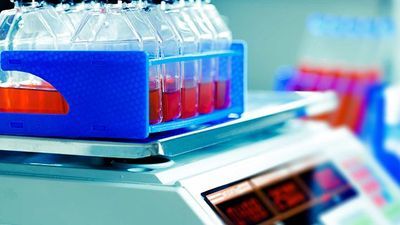A Primer on Digital Shakers
Shakers are ubiquitous items in biomedical laboratories and, therefore, a crucial purchase to consider
When you Google “digital shakers,” one of the most popular page results is the digital archive of the Shaker society and its history. The article you are reading now is not, however, about a utopian society whose own demise was implicit in its charter. Rather, this article is intended to give some information on the laboratory machines used to agitate liquids. For the purposes of this article, there are two types of shakers: 1) the big, slow orbital shakers used to culture bacteria; and 2) the high-speed microplate shakers designed to emulsify buffers or lyse cells as uniformly as possible. In both cases, it is beneficial to go digital for a number of reasons. The only advantage to purchasing analog shakers is the initial cost savings, especially if they are part of the start-up of a new lab or central core with an intensive focus on microbiology or high throughput screening, where many machines are required. Even with the initial savings, however, analog shakers often require maintenance and parts replacement at least yearly. Digital shakers usually come maintenance-free and offer a greater range of speeds compared with their analog counterparts; digitization allows the ability to program multistep shaking protocols and, often, to analyze speed, time, and temperature data in compatible software.
Big and slow
There is a huge variety of floor, stackable, and benchtop models designed to mix culture samples at low speed, and there are three key considerations that will drive decision making when it comes to selecting a model:
- What types, sizes, and numbers of vessels will be shaken? Floor models typically allow shaking of several 2- or 3-liter flasks up to about 500 rpm, while benchtop models usually accommodate smaller volumes and lower total weight limits on their orbital platforms.
- What is the optimal shaker footprint for your lab space? A larger laboratory may initially have ample space for floor-model shakers, especially if there is a significant amount of bacterial culture planned. As more equipment accumulates, you may find floor shakers migrating to inconvenient corners. Therefore, smaller benchtop models might be more suitable in the long run.
- What temperature range is necessary? For a price premium, there are stackable benchtop systems with refrigeration available, such as Eppendorf ’s New Brunswick Innova series; or massive, console models such as ThermoFisher’s MaxQ HP shakers. Typical floormodel shakers, on the other hand, can generally operate at temperatures from slightly below ambient up to 50 or 60 degrees Celsius. A cost-saving solution if refrigeration is necessary is to move shakers to a cold room.
Small and fast
One confounding variable in the high-throughput screening pipeline is the tendency for nonuniformity of conditions in multi-well plates. This often comes in the form of lysis, temperature changes, or reagent mixing, proceeding unevenly at the edges of plates compared with the wells toward the center. Dedicated, high-speed microplate shakers can mitigate eventual discrepancies in data collection by providing platforms for consistent, vigorous, and simultaneous agitation of multiple plates. Troemner (Thorofare, NJ) offers NIST-calibrated microplate shakers that operate up to 2500 rpm, accommodate up to 48 microplates, and have a heft and suction-enforced base to minimize any tendency to walk along the bench when operated at high speeds. These machines take up only a couple of square feet of bench space, but can seriously improve the workflow of screening and other applications that require mixing.
Shakers are ubiquitous items in biomedical laboratories and, therefore, a crucial purchase to consider, even though their features, costs, and varieties are often an afterthought. On the large scale, a wide array of options for bacterial shakers can suit many different laboratory needs. In miniature, digital microplate shakers can improve consistency in high-throughput applications.
For additional resources on shakers, including useful articles and a list of manufacturers, visit www.labmanager.com/shakers

